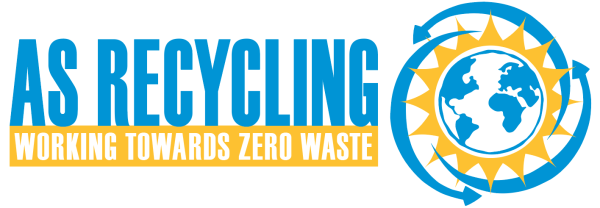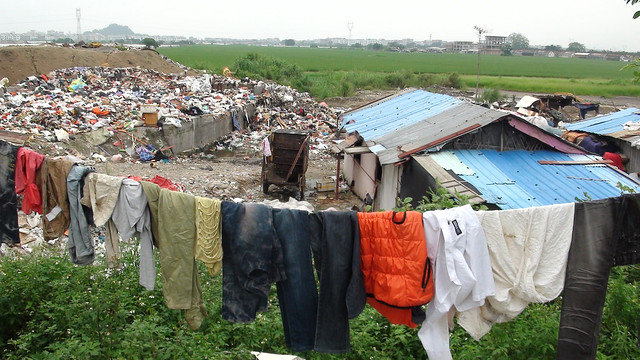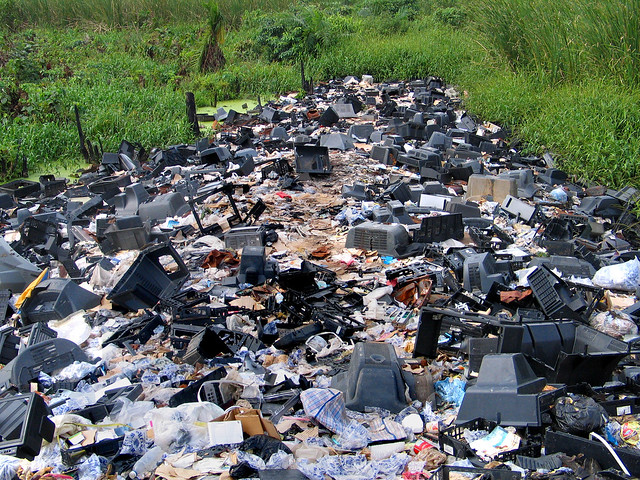Electronic waste is a growing problem in an increasingly technologically focused world. Devices go obsolete quickly, and many consumers simply discard old, perfectly functioning equipment as soon as a newer model is available. Consider cell phones and other mobile devices, as they have become especially prevalent in the US with ten times as many units sold in 2010 compared to 2000. These devices have a shorter average lifespan than any other type of electronic equipment, and of the 141 million mobile devices that were discarded in 2009 in the US alone, (nearly one discard for every two people per year), only 8% were recycled (source). Where did the rest end up?
When e-waste isn’t recycled properly it ends up in a landfill, often in very poor countries where it may be burned or just left in or near poverty-stricken communities. All of those wires and circuit boards are filled with heavy metals that leach into water and come in contact with local people and wildlife. These compounds can cause cancer, reproductive disorders, endocrine (hormone) disruption, and many other health problems. Many chemicals don’t break down over time or with processing and instead accumulate in the food chain, which can magnify the effect. In Guyiu, China, for example, e-waste incineration has resulted in the accumulation of ash piles with 200 times as much lead as would be legal in the US, and 82% of young children have lead poisoning (source).
E-waste is a growing concern as more and more devices are replaced and discarded. The UC system took a strong position against e-waste several years ago, and requires that all e-waste from a UC campus is always recycled with the strongest environmental standards and is never sent overseas. See what we’re doing here, and what you can do if you’re not a UCSB student or staff member but would still like to recycle your e-waste properly here.


